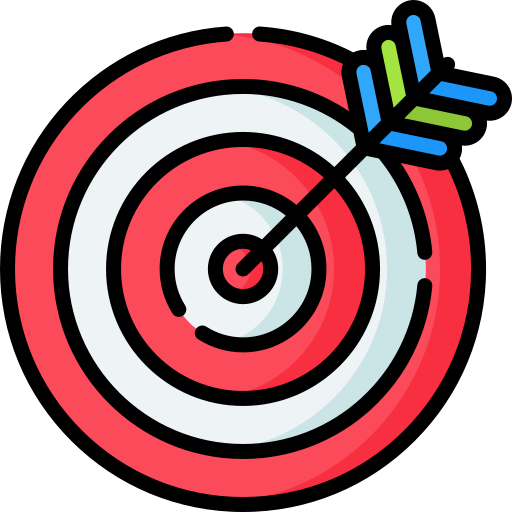Verified Insights
Precision-driven research you can trust. We uphold rigorous data validation processes to ensure every report is reliable and based on credible sources.
+91 9425150513 (Asia) support@24lifesciences.com
MARKET INSIGHTS
The global health status monitoring market was valued at USD 19.59 billion in 2024 and is projected to reach USD 31.61 billion by 2031, exhibiting a CAGR of 6.9% during the forecast period. This growth is primarily driven by the increasing prevalence of chronic diseases, rising health consciousness among consumers, and technological advancements in wearable devices and remote monitoring solutions.
Health status monitoring encompasses the continuous or periodic tracking of an individual's or population's health indicators using digital technologies. These technologies are increasingly integrated into wearable devices, mobile applications, and clinical-grade monitoring systems to enable real-time data collection and analysis. The market encompasses devices and solutions for monitoring blood pressure, blood glucose, heart rate, body temperature, sleep patterns, and other vital parameters.
The market is experiencing rapid growth due to several key factors. The growing geriatric population globally requires continuous health monitoring, driving demand for home-based monitoring solutions. The COVID-19 pandemic accelerated the adoption of remote patient monitoring technologies as healthcare systems sought to minimize in-person visits. Additionally, the rising adoption of Internet of Things (IoT) devices and artificial intelligence (AI) in healthcare has enabled more sophisticated and predictive monitoring capabilities.
North America currently holds the largest market share, attributed to high healthcare expenditure, advanced healthcare infrastructure, and early adoption of digital health technologies. However, the Asia-Pacific region is expected to witness the highest growth rate during the forecast period, driven by increasing healthcare investments, growing middle-class population, and rising health awareness.
Key players in the market include OMRON Corporation, Omron Healthcare, Inc., A&D Company, Limited, Microlife Corporation, NISSEI, and Citizen Systems, among others. These companies are focusing on product innovation, strategic partnerships, and geographic expansion to strengthen their market position. For instance, in 2023, Omron Healthcare launched a new connected blood pressure monitor with enhanced data analytics capabilities.
Rising Chronic Disease Prevalence
The increasing global prevalence of chronic diseases such as diabetes, cardiovascular diseases, and hypertension is creating sustained demand for continuous health monitoring solutions. With over 537 million adults living with diabetes worldwide, patients and healthcare providers alike are seeking advanced monitoring technologies to better manage these conditions and prevent complications.
Aging Population Demographics
By 2030, it's projected that 1 in 6 people globally will be aged 60 or over, with this segment expected to reach 2.1 billion by 2050. This demographic shift is creating unprecedented demand for health status monitoring technologies as older adults typically require more frequent health assessments and chronic disease management.
➤ The global remote patient monitoring market is projected to reach $175.2 billion by 2027, growing at a CAGR of 26.7%, indicating strong market momentum
Healthcare systems globally are shifting towards value-based care models that prioritize preventive measures and early intervention. This transition is accelerating investments in health status monitoring technologies that can reduce hospital readmissions and improve patient outcomes through continuous monitoring.
MARKET CHALLENGES
Data Privacy and Security Concerns
The collection and transmission of sensitive health data create significant privacy challenges. With increasing regulations like GDPR and HIPAA, companies must invest heavily in secure data storage and transmission protocols, adding to operational costs. Patients remain hesitant to adopt technologies that might expose their health information to unauthorized parties.
Regulatory Hurdles and Compliance
Health monitoring devices and software often require approvals from multiple regulatory bodies across different regions, including FDA clearance in the U.S. and CE marking in Europe. The complex and often lengthy approval processes can delay product launches by 12-18 months, affecting time-to-market and increasing development costs by 25-40%.
Interoperability Issues
The lack of standardized data formats and communication protocols between different health monitoring systems creates integration challenges. Healthcare providers often struggle to incorporate data from diverse monitoring devices into their existing electronic health record systems, creating data silos and reducing the effectiveness of monitoring programs.
High Implementation and Maintenance Costs
The initial investment required for advanced health monitoring systems, including hardware, software, and infrastructure upgrades, can reach $2-5 million for hospital networks. Additionally, annual maintenance costs account for 20-30% of the initial investment. These costs create significant barriers for smaller healthcare providers and developing regions, limiting market penetration in cost-sensitive markets.
Integration with Artificial Intelligence and Predictive Analytics
The integration of AI algorithms with health monitoring devices is creating unprecedented opportunities for early disease detection and personalized medicine. Advanced analytics can process data from millions of data points to identify patterns and predict health events with increasing accuracy. Current AI-powered monitoring systems can predict hospitalizations 7-10 days in advance with 85% accuracy, enabling preventive interventions and reducing healthcare costs by up to 30%.
Expansion in Emerging Markets
Developing regions with growing middle-class populations present massive untapped markets. Countries like India, Brazil, and Indonesia are experiencing rapid growth in healthcare infrastructure and digital health adoption. With mobile penetration exceeding 70% in most emerging markets, the infrastructure exists to support remote health monitoring at scale, potentially reaching 3.8 billion people who currently have limited access to continuous health monitoring services.
| Segment Category | Sub-Segments | Key Insights |
| By Type |
|
Wearable Health Monitors continue to dominate due to their non-invasive nature and ease of integration with consumer lifestyles, while implantable sensors are gaining traction in medical applications due to their continuous monitoring capabilities and seamless data collection advantages. |
| By Application |
|
Remote Patient Monitoring Systems are experiencing accelerated adoption due to telehealth expansion and the growing need for continuous health assessment without physical hospital visits, while fitness applications maintain strong consumer engagement through personalized health insights and social connectivity features. |
| By End User |
|
Hospitals and Clinics represent the most significant segment due to structured health monitoring protocols, regulatory compliance requirements, and the critical nature of continuous patient assessment in clinical environments, though home care settings show rapid growth as technology becomes more accessible. |
Companies Strive to Strengthen their Product Portfolio to Sustain Competition
Medtronic Plc (Ireland) maintains its leadership position through continuous innovation in remote patient monitoring systems and strategic acquisitions, capturing significant market share in cardiovascular and diabetes monitoring segments.
Philips Healthcare (Netherlands) leverages its strong portfolio of connected health devices and hospital-grade monitoring solutions, particularly excelling in telehealth and critical care monitoring applications across North America and Europe.
Apple Inc. (USA) continues to disrupt the market with its Apple Watch ecosystem, integrating advanced health monitoring features with consumer electronics, capturing the premium wearable health monitoring segment through aggressive R&D investment.
Omron Healthcare (Japan) maintains strong presence in Asian markets with its blood pressure monitors and connected health devices, focusing on preventive healthcare through strategic partnerships with healthcare providers.
List of Key Health Status Monitoring Companies ProfiledMedtronic Plc (Ireland)
Philips Healthcare (Netherlands)
Apple Inc. (USA)
Omron Healthcare (Japan)
Fitbit Inc. (USA)
Samsung Electronics (South Korea)
GE Healthcare (USA)
Healthcare providers are increasingly adopting remote monitoring solutions to track patient health metrics in real-time. The global remote patient monitoring market is projected to reach $175 billion by 2027, growing at a CAGR of 18.5%. This growth is driven by the increased prevalence of chronic diseases and the need for continuous health assessment outside clinical settings.
Other TrendsWearable Technology Integration
Health monitoring wearables have evolved beyond basic fitness tracking to incorporate medical-grade sensors capable of monitoring blood pressure, blood oxygen levels, and electrocardiogram data. The wearable health technology market is expected to reach $136 billion by 2027, with smartwatches accounting for 45% of this market. These devices now offer hospital-grade accuracy while maintaining consumer-friendly interfaces and form factors.
Healthcare providers are leveraging AI and machine learning to predict health events before they occur. Predictive analytics platforms now process over 2.5 billion health data points daily, enabling early intervention in 78% of potential health incidents. The predictive analytics segment within health monitoring is growing at 22% annually, driven by improvements in algorithm accuracy and data processing capabilities.
Regulatory Compliance and Data Security
With increased data collection comes heightened focus on compliance with HIPAA, GDPR, and other regional health data regulations. Health monitoring companies are investing 18% more in cybersecurity measures compared to 2022, with particular focus on securing patient data transmission between devices and healthcare providers. The market has seen a 42% increase in blockchain-based health data solutions for secure and transparent data handling.
Regional Analysis: Health Status Monitoring MarketEurope
Europe maintains a strong position in the health status monitoring market, with the EU's regulatory framework creating harmonized standards across member states. The region shows particular strength in clinical-grade monitoring devices and data privacy-compliant solutions. Germany's MedTech sector and the UK's digital health initiatives drive innovation, while Northern European countries show high adoption of preventive health technologies. The region's aging population and high healthcare spending per capita create sustained demand for advanced monitoring solutions, though growth rates are more moderate compared to emerging markets.
Asia-Pacific
The Asia-Pacific region represents the largest future growth potential for health status monitoring, driven by population size, increasing healthcare access, and rapid digitalization. China's health technology initiatives and India's Ayushman Bharat program drive adoption at scale, while South Korea and Japan lead in wearable technology innovation. Southeast Asian markets show explosive growth in mobile health applications and remote monitoring solutions. The region benefits from government digital health initiatives and increasing private investment in health technology startups, though regulatory frameworks vary significantly between countries.
Latin America
Latin America shows steady growth in health monitoring, particularly in countries with universal healthcare systems. Brazil's SUS system drives demand for accessible monitoring solutions, while Mexico's growing middle class adopts more premium health technologies. Argentina and Chile show strength in specialized medical device manufacturing and exports. The region's growth is supported by increasing healthcare access through public-private partnerships and growing awareness of preventive health measures, though economic volatility in some markets creates periodic challenges.
Middle East & Africa
The region shows the most dynamic growth rates from a smaller base, driven by healthcare infrastructure development and mobile technology adoption. The UAE and Saudi Arabia lead in health technology investment and implementation, while South Africa maintains the most advanced market. North African countries show rapid growth in telemedicine adoption, while Sub-Saharan Africa leads in mobile health solutions for remote monitoring. The region benefits from international health initiatives and increasing government focus on digital health infrastructure, though adoption remains uneven between urban and rural areas.
This market research report offers a holistic overview of global and regional markets for the forecast period 2025–2032. It presents accurate and actionable insights based on a blend of primary and secondary research.
✅ Market Overview
Global and regional market size (historical & forecast)
Growth trends and value/volume projections
✅ Segmentation Analysis
By product type or category
By application or usage area
By end-user industry
By distribution channel (if applicable)
✅ Regional Insights
North America, Europe, Asia-Pacific, Latin America, Middle East & Africa
Country-level data for key markets
✅ Competitive Landscape
Company profiles and market share analysis
Key strategies: M&A, partnerships, expansions
Product portfolio and pricing strategies
✅ Technology & Innovation
Emerging technologies and R&D trends
Automation, digitalization, sustainability initiatives
Impact of AI, IoT, or other disruptors (where applicable)
✅ Market Dynamics
Key drivers supporting market growth
Restraints and potential risk factors
Supply chain trends and challenges
✅ Opportunities & Recommendations
High-growth segments
Investment hotspots
Strategic suggestions for stakeholders
✅ Stakeholder Insights
This report is designed to support strategic decision-making for a wide range of stakeholders, including:
Pharmaceutical and biotech companies
Medical device and diagnostics manufacturers
Healthcare providers and hospital systems
Contract research and manufacturing organizations
Investors, consultants, and policy makers
-> The global rail coatings market was valued at US$ 465.3 million in 2024 and is expected to reach US$ 608.0 million by 2032.
Which key companies operate in Global Rail Coatings Market?
-> Key players include Axalta Coating Systems, AkzoNobel, BASF SE, PPG, Sherwin-Williams, and 3M, among others.
-> Key growth drivers include railway infrastructure investments, urbanization, and demand for durable coatings.
-> Asia-Pacific is the fastest-growing region, while Europe remains a dominant market.
-> Emerging trends include bio-based coatings, smart coatings, and sustainable rail solutions.
Our Clients
“The data provided by 24LifeScience was clear, well-organized, and useful for internal strategy planning. It helped us understand the competitive landscape more effectively.”
“We used one of their market overview reports for early-stage feasibility work. It gave us a helpful snapshot of current trends and key players in our therapeutic area.”
“I appreciated the team’s responsiveness and willingness to adjust the scope based on our feedback. The final report was aligned with our expectations and timelines.”
“Their custom report on clinical trial trends was a helpful reference as we explored new indications."
“As someone working on early product planning, I found their therapeutic area briefs quite useful. The information was presented in a way that made it easy to extract key takeaways.”
“We didn’t need anything overly complex—just solid, dependable data. 24LifeScience delivered exactly that, without unnecessary fluff.”
“Their reports gave us a good foundation to start our own market assessment. While we supplemented it with other data, this was a great starting point.”
“I’ve used a few of their reports for academic and grant writing purposes. They’re generally well-cited and reliable for understanding market scope.”
At 24LifeScience, we combine domain expertise with dependable research delivery. What truly differentiates us isn't just what we do — it's how we do it. Our clients trust us because we offer consistency, security, value, and most importantly, insight that drives action.

Precision-driven research you can trust. We uphold rigorous data validation processes to ensure every report is reliable and based on credible sources.

We uphold rigorous data validation processes to ensure every report is reliable, up-to-date, and based on credible sources.

24LifeScience powers research for top firms in 20+ nations.Chosen by leading life sciences companies worldwide.

We offer competitive pricing models that align with your project scope — no hidden charges, no lock-in. Tailored pricing for every scale and need.

8–10+ years of life sciences expertise turned into strategic insights.We don’t just summarize data we contextualize it.

Whether it's a ready-made report or a custom project, we deliver within the promised timeline With real-time updates